University of Applied Sciences Mittweida
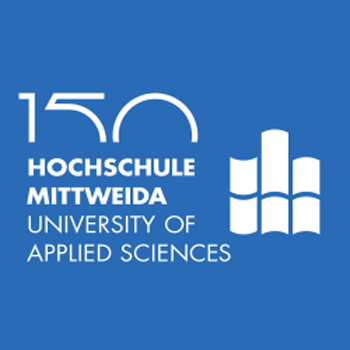
Founded: 1867
Address: Technikumplatz 17 - Mittweida, Germany
Phone: +493727 580
Address: Technikumplatz 17 - Mittweida, Germany
Phone: +493727 580
Here you find out University of Applied Sciences Mittweida complete information about fees, location, degree University of Applied Sciences Mittweida offers, number, website, and much more. University of Applied Sciences Mittweida is a leading university in Mittweida - Germany.
You can also find out jobs at University of Applied Sciences Mittweida for students, teachers, and professors. We also update the database for an internship at University of Applied Sciences Mittweida for students.
Mittweida University of Applied Sciences offers its almost 7,000 students more than 50 degree programs of international standard. Students can complete their Bachelor, Master or Diploma degrees at the 5 faculties.
The acknowledged study programs provide scientific skills and expertise in the areas of engineering, economics, computer sciences, social work and media. Studies are characteriz...ed by a theoretical as well as a strong practical orientation and build on active cooperation with national and international businesses and industry.
The university is proudly looking back upon a successful history of 150 years with nearly 80,000 graduates of more than 40 countries
Internationality has been a trademark of the Mittweida University of Applied Sciences since its foundation in 1867. In the first decades of its existence, more than half of the students came from abroad to gain expertise in Mittweida.
Today the university is cooperating with over 100 partners worldwide and approximately 21 percent of all students are international students. The European exchange program Erasmus+ is an important part of the international cooperation strategy. The university also realizes exchanges with universities in Asia, North and South America, the Middle East, Africa and New Zealand.
Carl Georg Weitzel, who was an engineer from Mannheim, founded the „Technikum Mittweida“ in the old city theatre on 7 May 1867. He was supported by local enterprises and the municipality. This privately run training centre for mechanical engineers had soon attracted numerous students because the “Technikum Mittweida” had already been one of the biggest educational institution in Germany at the turn of the century. At that time, the Free State of Saxony was one of the leading states in mechanical engineering. In 1870, it owned the densest railway network of all German states. Moreover, Chemnitz was the centre of the German mechanical engineering in 1871.
Carl Georg Weitzel recognized that the industry was in need of engineers familiar with and connected to industrial experience next to qualified workers and masters. For centuries, education felt obliged to keep this image up, sometimes fighting against the view of the official educational policy and occasionally against chicanes. By no means, it was strived to approximate the “Technikum” as a “higher technical institution” to a technical university. Nevertheless, compared to diverse vocational schools, it was taught on a much higher level.
The training began with 17 students. However the number of students rose up to 185 in 1873 so that the capacities of rented rooms did not meet its requirements. Despite considerable financial difficulties, Carl Georg Weitzel managed to use his first own educational building in 1874, which was later part of the main building and which nowadays is known as “Carl-Georg-Weitzel-Bau”.
The construction of laboratories for practical experience and the introduction of “electrical engineering” as a subject belonged to the founder’s prospective decisions in 1884. Two years later, the lecture rooms for physics held an electrical lighting set for demonstration. In 1890, three new halls were built for the department of electrical engineering.
In 1892 the town council deemed Carl Georg Weitzel, founder of the “Technikum Mittweida”, worthy of his merits by giving him the freedom of the city. An honorary degree called “Kammerrat” was conferred on him by the Free State of Saxony. In the same year, Weitzel handed over the official duties of a director to Alfred Udo Holzt after having been in office for 25 years. The psychological stress as a director, teacher, author of textbooks and also personal strokes had had an effect on his health condition.
By taking over the leadership of the institution, a man assumed the office who had not only taught as a young engineer at the “Technikum” but who would continue to pursue the target of Carl Georg Weitzel who had demanded that “especially in teaching the practical side had to be taken into account.
Early enough, Holzt took new technical developments into account. Consequently, he offered classes on aeronautical and automotive engineering beginning in 1909. Since 1917 the future electrical engineers could also attend a class on “telecommunications and radio technology”. Furthermore, they could use laboratories for high frequency technology, radio technology and telecommunications.
Results of his ambitious objectives were the construction of the “electro technical institute”, opened in 1894 and now called “Alfred-Udo-Holzt-Bau”, and the opening of the “teaching fabric workshops” in 1901 which were renamed “concision workshops Mittweida GmbH” three years later. Not only students could get prepared for their studies in this company. It was also used for the production of electrical machines, measurement devices, teaching aids and machine tools.
Already in 1902, the title professor and in 1917 the honorary title “Königlich-sächsischer Hofrat” were awared to Alfred Udo Holzt. In the middle of the 1920s, the “Technikum Mittweida” reached the highest student numbers (more than 2300 young people) at that time. Most of the visitors came from European countries, from overseas and from Asia. From time to time, more than half of all students were foreigners.
Although the “Technikum Mitweida” enjoyed great popularity and a good reputation, the educational institute and the “Präzise” got into financial embarrassments at the end of the nineteen-twenties. In the years of the worldwide economic slump, the number of student enrolments sank and the closing seemed to be unavoidable. The personal character of the institute exacerbated the critical situation since it was opposed to the endeavour to nationalize all schools.
After the National Socialists came to power, there was no realistic possibility to carry on with the common course. From 1935 onwards, it was renamed “engineering school Mittweida”. The court counsellor professor Alfred Udo Holtz resigned on 15 June 1936. After long-lasting negotiations, the foundation “engineering school Mittweida (higher technical institute)” acquired the educational institute by purchase. On 25 October 1938, Prof. Ludwig Zipperer got in the lead. The teaching could be perpetuated until January 1945.
On 1 November 1947, the “engineering school Mittweida” continued with teaching mechanical engineering, electrical engineering, the engineering of agricultural machines and automotive engineering. From 1951 onwards, only students for electrical engineering were enrolled. At the same time, the engineer Martin Schneidereit was appointed director by the responsible ministry for industry. In the summer of 1951, constructions of a new laboratory began, now called “Walter-Bruch-Bau”. On 16 October 1953, the new laboratory was ceremoniously inaugurated.
In the nineteen-sixties, the electro technical training allied with the electrical one. This way, new specialisations arose such as the control and feedback control systems. Due to its efficiency, the engineering school in Mittweida was one of the leading training centres in Saxony. It was therefore chosen as a new type of higher education.
On 1 September 1969, a ceremonial act of foundation for the “engineering school Mittweida” took place. Prof. Reinhard Göttner (from the college of transportation in Dresden) was appointed vice-chancellor by the ministry. He headed the college until 1981. According to her status, it had the same right as universities and technical colleges. All in all, the academic level enhanced due to the appointment of qualified scientists to college lectures and professors and due to former teachers from technical colleges who were highly committed. The prospective “college engineers” could study “Electrical Engineering”, “Information Technology” and “Hardware”. From 1976 onwards, all graduates from the engineering college were called “graduate engineer”. The engineering college received the right to get an academic degree as a “doctor engineer” in 1980. Soon after its foundation, very successful working research groups, new laboratories and practical trainings came into being to increase the level of education and to support the applied and primarily the interdisciplinary academic work. At the beginning of the eighties, however, an extremely critical situation arose for the ongoing of the engineering college Mittweida. The independence should have been raised for the benefit of a technical college. These plans came not into existence due to the resistance of the head and the staff.
You can also find out jobs at University of Applied Sciences Mittweida for students, teachers, and professors. We also update the database for an internship at University of Applied Sciences Mittweida for students.
Mittweida University of Applied Sciences offers its almost 7,000 students more than 50 degree programs of international standard. Students can complete their Bachelor, Master or Diploma degrees at the 5 faculties.
The acknowledged study programs provide scientific skills and expertise in the areas of engineering, economics, computer sciences, social work and media. Studies are characteriz...ed by a theoretical as well as a strong practical orientation and build on active cooperation with national and international businesses and industry.
The university is proudly looking back upon a successful history of 150 years with nearly 80,000 graduates of more than 40 countries
Internationality has been a trademark of the Mittweida University of Applied Sciences since its foundation in 1867. In the first decades of its existence, more than half of the students came from abroad to gain expertise in Mittweida.
Today the university is cooperating with over 100 partners worldwide and approximately 21 percent of all students are international students. The European exchange program Erasmus+ is an important part of the international cooperation strategy. The university also realizes exchanges with universities in Asia, North and South America, the Middle East, Africa and New Zealand.
Carl Georg Weitzel, who was an engineer from Mannheim, founded the „Technikum Mittweida“ in the old city theatre on 7 May 1867. He was supported by local enterprises and the municipality. This privately run training centre for mechanical engineers had soon attracted numerous students because the “Technikum Mittweida” had already been one of the biggest educational institution in Germany at the turn of the century. At that time, the Free State of Saxony was one of the leading states in mechanical engineering. In 1870, it owned the densest railway network of all German states. Moreover, Chemnitz was the centre of the German mechanical engineering in 1871.
Carl Georg Weitzel recognized that the industry was in need of engineers familiar with and connected to industrial experience next to qualified workers and masters. For centuries, education felt obliged to keep this image up, sometimes fighting against the view of the official educational policy and occasionally against chicanes. By no means, it was strived to approximate the “Technikum” as a “higher technical institution” to a technical university. Nevertheless, compared to diverse vocational schools, it was taught on a much higher level.
The training began with 17 students. However the number of students rose up to 185 in 1873 so that the capacities of rented rooms did not meet its requirements. Despite considerable financial difficulties, Carl Georg Weitzel managed to use his first own educational building in 1874, which was later part of the main building and which nowadays is known as “Carl-Georg-Weitzel-Bau”.
The construction of laboratories for practical experience and the introduction of “electrical engineering” as a subject belonged to the founder’s prospective decisions in 1884. Two years later, the lecture rooms for physics held an electrical lighting set for demonstration. In 1890, three new halls were built for the department of electrical engineering.
In 1892 the town council deemed Carl Georg Weitzel, founder of the “Technikum Mittweida”, worthy of his merits by giving him the freedom of the city. An honorary degree called “Kammerrat” was conferred on him by the Free State of Saxony. In the same year, Weitzel handed over the official duties of a director to Alfred Udo Holzt after having been in office for 25 years. The psychological stress as a director, teacher, author of textbooks and also personal strokes had had an effect on his health condition.
By taking over the leadership of the institution, a man assumed the office who had not only taught as a young engineer at the “Technikum” but who would continue to pursue the target of Carl Georg Weitzel who had demanded that “especially in teaching the practical side had to be taken into account.
Early enough, Holzt took new technical developments into account. Consequently, he offered classes on aeronautical and automotive engineering beginning in 1909. Since 1917 the future electrical engineers could also attend a class on “telecommunications and radio technology”. Furthermore, they could use laboratories for high frequency technology, radio technology and telecommunications.
Results of his ambitious objectives were the construction of the “electro technical institute”, opened in 1894 and now called “Alfred-Udo-Holzt-Bau”, and the opening of the “teaching fabric workshops” in 1901 which were renamed “concision workshops Mittweida GmbH” three years later. Not only students could get prepared for their studies in this company. It was also used for the production of electrical machines, measurement devices, teaching aids and machine tools.
Already in 1902, the title professor and in 1917 the honorary title “Königlich-sächsischer Hofrat” were awared to Alfred Udo Holzt. In the middle of the 1920s, the “Technikum Mittweida” reached the highest student numbers (more than 2300 young people) at that time. Most of the visitors came from European countries, from overseas and from Asia. From time to time, more than half of all students were foreigners.
Although the “Technikum Mitweida” enjoyed great popularity and a good reputation, the educational institute and the “Präzise” got into financial embarrassments at the end of the nineteen-twenties. In the years of the worldwide economic slump, the number of student enrolments sank and the closing seemed to be unavoidable. The personal character of the institute exacerbated the critical situation since it was opposed to the endeavour to nationalize all schools.
After the National Socialists came to power, there was no realistic possibility to carry on with the common course. From 1935 onwards, it was renamed “engineering school Mittweida”. The court counsellor professor Alfred Udo Holtz resigned on 15 June 1936. After long-lasting negotiations, the foundation “engineering school Mittweida (higher technical institute)” acquired the educational institute by purchase. On 25 October 1938, Prof. Ludwig Zipperer got in the lead. The teaching could be perpetuated until January 1945.
On 1 November 1947, the “engineering school Mittweida” continued with teaching mechanical engineering, electrical engineering, the engineering of agricultural machines and automotive engineering. From 1951 onwards, only students for electrical engineering were enrolled. At the same time, the engineer Martin Schneidereit was appointed director by the responsible ministry for industry. In the summer of 1951, constructions of a new laboratory began, now called “Walter-Bruch-Bau”. On 16 October 1953, the new laboratory was ceremoniously inaugurated.
In the nineteen-sixties, the electro technical training allied with the electrical one. This way, new specialisations arose such as the control and feedback control systems. Due to its efficiency, the engineering school in Mittweida was one of the leading training centres in Saxony. It was therefore chosen as a new type of higher education.
On 1 September 1969, a ceremonial act of foundation for the “engineering school Mittweida” took place. Prof. Reinhard Göttner (from the college of transportation in Dresden) was appointed vice-chancellor by the ministry. He headed the college until 1981. According to her status, it had the same right as universities and technical colleges. All in all, the academic level enhanced due to the appointment of qualified scientists to college lectures and professors and due to former teachers from technical colleges who were highly committed. The prospective “college engineers” could study “Electrical Engineering”, “Information Technology” and “Hardware”. From 1976 onwards, all graduates from the engineering college were called “graduate engineer”. The engineering college received the right to get an academic degree as a “doctor engineer” in 1980. Soon after its foundation, very successful working research groups, new laboratories and practical trainings came into being to increase the level of education and to support the applied and primarily the interdisciplinary academic work. At the beginning of the eighties, however, an extremely critical situation arose for the ongoing of the engineering college Mittweida. The independence should have been raised for the benefit of a technical college. These plans came not into existence due to the resistance of the head and the staff.
Read More
Details:
LeaderShip: President: Lothar Otto
Fees:
Time:
Phone Number: +493727 580
City: Mittweida
Fees:
Time:
Phone Number: +493727 580
City: Mittweida
Timing:
Country: Germany
Staff:
Website: http://www.hs-mittweida.de
Country: Germany
Staff:
Website: http://www.hs-mittweida.de
Subjects:
Jobs in University of Applied Sciences Mittweida
Currently, there is no job opening in University of Applied Sciences Mittweida as per our database.

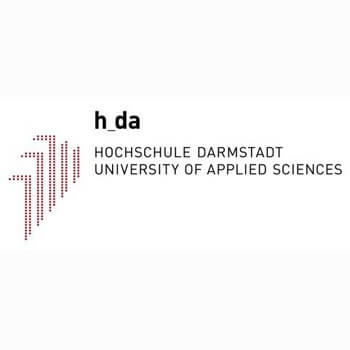
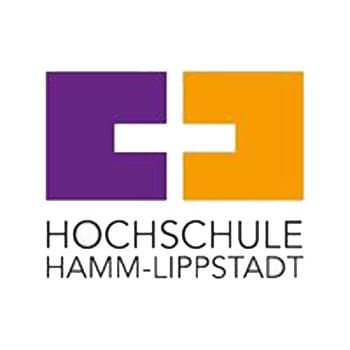
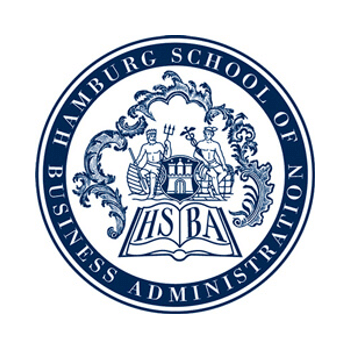


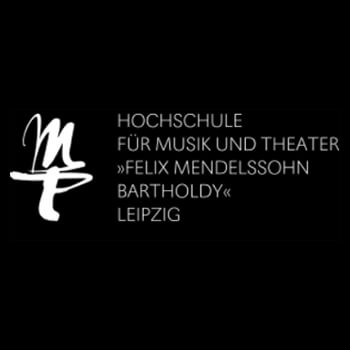












Leave a Reply